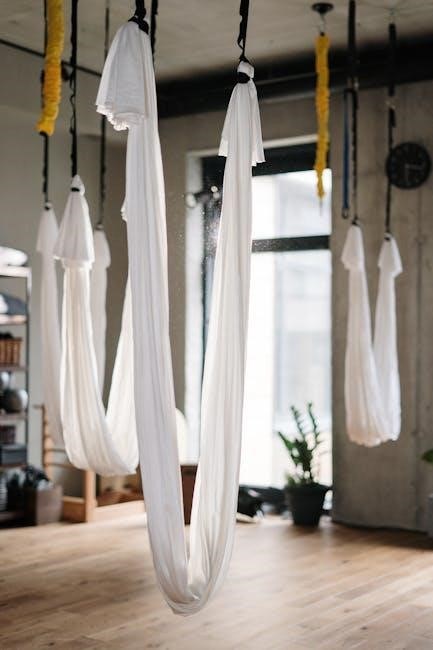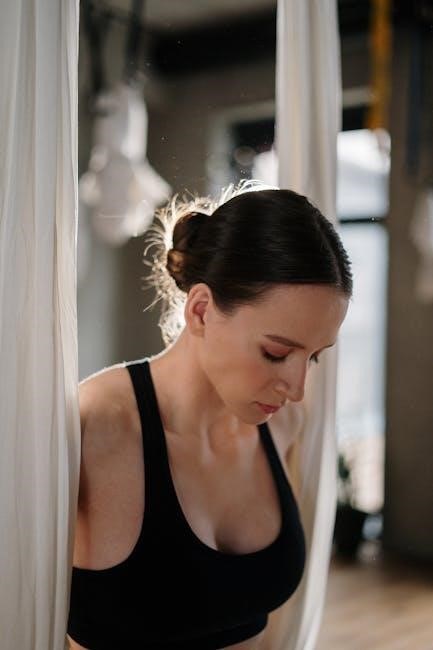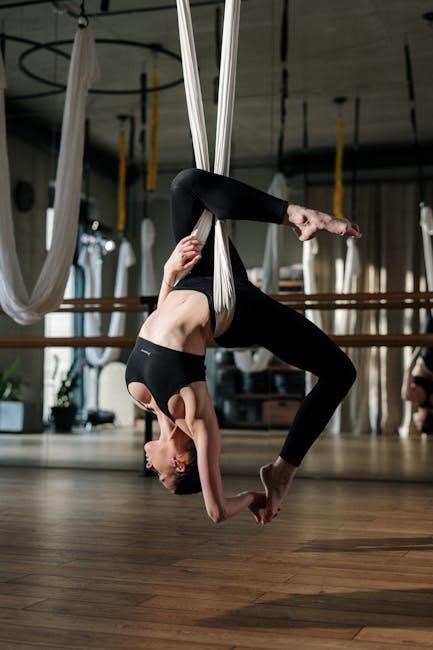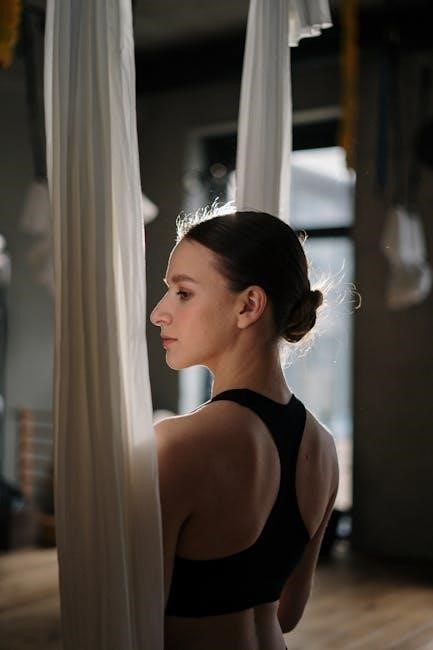Welcome to the Air Optix Multifocal Fitting Guide‚ designed to help eyecare professionals master the process of fitting multifocal lenses for optimal patient outcomes. This guide provides a comprehensive approach to understanding and applying the latest techniques for successful multifocal lens fitting‚ ensuring clear vision and comfort for patients at all distances.
1.1 Overview of Air Optix Multifocal Contact Lenses
Air Optix Multifocal contact lenses are designed to provide clear vision at all distances‚ addressing the needs of patients with presbyopia or multiple vision requirements. These lenses combine advanced technology with comfort‚ offering a seamless transition between near‚ intermediate‚ and far vision. Featuring unique moisture-retaining properties‚ such as HydraGlyde Moisture Matrix‚ they ensure long-lasting comfort and reduced deposits. Available in various powers and base curves‚ Air Optix Multifocal lenses cater to diverse prescriptions‚ making them a versatile option for eyecare professionals. Their monthly replacement schedule ensures convenience and hygiene‚ while the silicone hydrogel material promotes oxygen flow for healthy corneas. These lenses are tailored to enhance both visual clarity and wearer satisfaction.
1.2 Importance of Proper Fitting for Multifocal Lenses
Proper fitting of Air Optix Multifocal lenses is crucial for achieving optimal vision and comfort. Incorrect fitting can lead to vision issues‚ such as blurred vision or eye strain‚ and may cause discomfort or dryness. Ensuring the correct base curve and diopter power is essential for matching the lens to the patient’s corneal shape and prescription needs. A well-fitted lens promotes proper centration and movement‚ ensuring clear vision at all distances; Additionally‚ correct fitting minimizes the risk of complications like corneal irritation or infections. Accurate fitting also enhances patient satisfaction‚ as it directly impacts the lens’s performance and comfort throughout the day. Proper fitting is an investment in the patient’s long-term eye health and visual clarity.
Understanding Air Optix Multifocal Lens Specifications
Air Optix Multifocal lenses are designed with advanced technology‚ featuring specific base curves and diopter powers to suit individual prescriptions. Their HydraGlyde coating ensures long-lasting moisture retention for comfort.
2.1 Base Curve and Its Significance
The base curve of Air Optix Multifocal lenses is crucial for ensuring proper fit and comfort. It refers to the curvature of the lens‚ designed to match the shape of the cornea. A correct base curve ensures optimal centration and movement‚ which are vital for clear vision at all distances. If the base curve is too steep or too flat‚ it can lead to discomfort or poor lens performance. Proper assessment of the patient’s corneal shape helps in selecting the right base curve‚ ensuring a comfortable and effective fit for multifocal lenses.

2.2 Diopter Power and Prescription Requirements
Diopter power is a critical factor in Air Optix Multifocal lenses‚ determining the corrective strength needed for near‚ intermediate‚ and far vision. The prescription specifies the power for each zone‚ ensuring seamless vision across all distances. Accurate calculation of the add power is essential to meet the patient’s specific needs. The lenses are designed to accommodate a wide range of prescriptions‚ including astigmatism and presbyopia. Proper alignment of the powers with the patient’s eyes ensures optimal performance. Understanding the relationship between diopter power and lens design allows for precise fitting‚ enhancing both comfort and visual clarity for patients with multifocal requirements.
Pre-Fitting Considerations
Evaluate corneal health and tear film stability to ensure suitability for multifocal lenses. Assess lifestyle needs and ocular conditions to tailor the fitting process for optimal comfort and vision.
3.1 Assessing Patient Needs and Lifestyle
Evaluating patient needs and lifestyle is crucial for successful multifocal lens fitting. Consider factors like daily activities‚ occupational demands‚ and hobbies to determine the most suitable lens design. Assess the patient’s adaptability to multifocal vision and their expectations for near‚ intermediate‚ and far vision. Review their medical history‚ including conditions like dry eye or astigmatism‚ which may influence lens selection. Additionally‚ discuss their preferences for comfort‚ convenience‚ and aesthetic appeal. This comprehensive assessment ensures a personalized approach‚ enhancing the likelihood of a successful fitting and long-term patient satisfaction with Air Optix Multifocal lenses.
3.2 Evaluating Corneal Health for Multifocal Lenses
Evaluating corneal health is essential for successful multifocal lens fitting. Assess the cornea’s surface condition‚ curvature‚ and integrity to ensure compatibility with the lens design. Perform keratometry to measure the cornea’s steepness‚ which helps determine the appropriate base curve. Use slit-lamp examination to check for irregularities or conditions like keratoconus‚ which may affect lens fit. Ensure the cornea is free from significant astigmatism or abrasions‚ as these can compromise comfort and vision. Additionally‚ evaluate tear quality and ocular surface health‚ as poor tear film can reduce lens performance. A healthy cornea ensures optimal comfort and clear vision with Air Optix Multifocal lenses.

The Fitting Process
The fitting process involves initial lens selection and trial‚ followed by verification of lens position and movement to ensure proper fit and clear vision at all distances.
4.1 Initial Lens Selection and Trial
Initial lens selection begins with assessing the patient’s prescription and lifestyle needs to determine the appropriate Air Optix Multifocal lens parameters. Trial lenses are chosen based on the patient’s dominant eye and specific visual requirements. The practitioner places the lenses on the patient’s eyes‚ ensuring proper centration and movement. The patient is then asked to evaluate vision at various distances to ensure clarity and comfort. This step is crucial for confirming the correct power and design‚ laying the foundation for a successful fitting outcome.

4.2 Verifying Lens Position and Movement
After placing the trial lenses‚ verify their position and movement to ensure optimal performance. The lens should center well on the eye‚ with the optical zones aligned appropriately for near‚ intermediate‚ and far vision. Assess lens movement by having the patient look laterally; excessive movement may indicate improper fit. Ensure the lens Edge Lift is adequate to prevent irritation. If vision is blurry or discomfort is noted‚ adjustments may be needed. Proper verification ensures the lens functions as intended‚ providing clear vision at all distances and promoting long-term comfort and eye health.

Post-Fitting Care and Follow-Up
Post-fitting care and follow-up are crucial for ensuring comfort and clear vision. Schedule regular appointments and educate patients on proper lens maintenance to uphold eye health.
5.1 Scheduling Follow-Up Appointments
Scheduling follow-up appointments is essential to ensure the Air Optix Multifocal lenses are performing optimally. Typically‚ the first follow-up is recommended within one week of the initial fitting to assess lens comfort and vision clarity. Subsequent appointments should be scheduled at intervals of 1-3 months to monitor corneal health and address any emerging issues. These visits allow practitioners to verify lens positioning‚ movement‚ and overall patient adaptation. Regular follow-ups help prevent complications and ensure long-term success with multifocal lenses. Consistent monitoring also enables timely adjustments to the prescription or fitting parameters‚ ensuring continued patient satisfaction and optimal visual outcomes.
5.2 Patient Education on Lens Maintenance
Patient education is crucial for ensuring the longevity and comfort of Air Optix Multifocal lenses. Emphasize the importance of proper cleaning‚ disinfecting‚ and storage to prevent contamination and maintain lens hygiene. Teach patients to handle lenses with clean hands and avoid touching the surface to minimize deposits. Highlight the benefits of HydraGlyde technology for moisture retention and comfort. Stress the need to replace lenses as prescribed‚ typically every 30 days‚ to prevent complications. Encourage patients to attend follow-up appointments and report any discomfort or vision issues promptly. Proper care habits ensure optimal lens performance and patient satisfaction.
Addressing Common Fitting Challenges
Addressing common fitting challenges involves verifying lens parameters‚ ensuring proper fit‚ and leveraging Air Optix Multifocal’s adaptive technology for enhanced comfort and clear vision.
6.1 Troubleshooting Vision Issues
Troubleshooting vision issues with Air Optix Multifocal lenses often involves addressing incorrect lens power‚ poor centration‚ or improper fit. Begin by verifying the base curve and diopter power match the prescription. Ensure the lens moves adequately on the eye without causing discomfort. If vision remains blurry‚ check for decentration or improper rotation. Refractive errors may require adjusting the near or intermediate power. Pay attention to patient feedback about distortion or lack of clarity at specific distances. Utilize diagnostic tools to identify misalignment or inadequate coverage. Addressing these factors ensures optimal visual acuity and patient satisfaction with multifocal lenses.
6.2 Managing Discomfort or Dryness
Discomfort or dryness with Air Optix Multifocal lenses can often be resolved by ensuring proper fit and lens hygiene. Evaluate the base curve to confirm it matches the corneal shape‚ as improper fit can cause irritation. Recommend rewetting drops compatible with silicone hydrogel lenses to maintain moisture. Assess the patient’s environment‚ as dry climates or prolonged screen time can exacerbate dryness. Consider switching to a more hydrating lens like Air Optix plus HydraGlyde if discomfort persists. Emphasize proper cleaning and replacement schedules to prevent protein deposits. If issues remain‚ consult diagnostic tools or adjust the lens power for better comfort and visual clarity.

Advanced Fitting Techniques
Advanced techniques involve using diagnostic lenses to refine fits and adjusting powers for optimal vision. These methods ensure precision and comfort‚ enhancing patient satisfaction with Air Optix Multifocal lenses.
7.1 Using Diagnostic Lenses
Diagnostic lenses are essential tools for refining multifocal fits. They allow practitioners to assess lens performance and ensure proper centration‚ movement‚ and vision clarity at all distances. By trial‚ adjustments can be made to optimize patient comfort and visual acuity‚ ensuring the selected lens meets the patient’s specific needs.
These lenses are designed to mimic the final prescription‚ enabling precise evaluations. Advanced technologies‚ like HydraGlyde‚ enhance surface moisture‚ improving comfort during the fitting process. Diagnostic lenses are a cornerstone of successful multifocal fitting‚ ensuring tailored solutions for each patient’s unique requirements.
7;2 Adjusting Powers for Optimal Vision
Adjusting the power of Air Optix Multifocal lenses is crucial for achieving optimal vision at all distances. During the fitting process‚ practitioners may need to fine-tune the near‚ intermediate‚ and far vision zones to ensure clarity and comfort. This involves verifying the lens centration‚ movement‚ and overall performance. Advanced technologies‚ such as HydraGlyde‚ enhance surface moisture‚ reducing discomfort and improving visual acuity. By carefully balancing the powers‚ eyecare professionals can address specific patient needs‚ ensuring seamless transitions between near and far vision; Proper power adjustment is key to maximizing patient satisfaction and achieving successful multifocal lens fits.
The Air Optix Multifocal Fitting Guide provides a comprehensive approach to achieving successful outcomes‚ ensuring clear vision and comfort for patients at all distances with advanced technology.
8.1 Summary of Key Fitting Principles
Successful multifocal lens fitting begins with a thorough patient assessment‚ considering lifestyle and visual needs. Proper base curve and diopter selection are critical for optimal comfort and vision. Ensuring correct lens positioning and movement during the fitting process is essential for clear near‚ intermediate‚ and far vision. Post-fitting care‚ including patient education on lens maintenance‚ is vital for long-term satisfaction. Advanced techniques‚ such as diagnostic lens trials and power adjustments‚ can enhance outcomes. Regular follow-ups and addressing any discomfort or vision issues promptly ensure patient satisfaction. By adhering to these principles‚ eyecare professionals can achieve successful multifocal lens fittings tailored to individual patient needs.
8.2 Final Tips for Successful Multifocal Lens Fitting
For optimal multifocal lens fitting‚ prioritize clear communication with patients to align expectations and lifestyle needs. Schedule follow-ups to monitor adaptation and address concerns early. Emphasize proper lens care and hygiene to ensure long-term comfort. Leverage advanced technologies like HydraGlyde for moisture retention and comfort. Always verify lens positioning and movement during trials. Encourage patients to report discomfort or vision issues promptly. Tailor fitting strategies to individual needs‚ adjusting powers as necessary. Regular follow-ups and open dialogue are key to achieving patient satisfaction. By combining these strategies‚ eyecare professionals can enhance fitting success and provide patients with seamless vision at all distances.